Outside Eamonn Doyle’s apartment, a long room at the top of a building on North Great George’s Street in Dublin, a storm is whipping rain down Parnell Street and O’Connell Street. It’s this small patch of the city that has propelled Doyle into the stratosphere.
In a few years Doyle has established himself as an internationally lauded photographer. Those years, since his first photobook was published in 2014, may have been relatively short, but Doyle’s career has been a few decades in the making.
Having been at the vanguard of creativity in the capital for more than 20 years, he now finds himself elevated beyond Ireland. National validation has finally arrived, with Doyle being placed at the centre of the St Patrick’s Festival, with the festival and the RHA presenting a major exhibition of his work in association with Fundación Mapfre, in Madrid. The exhibition coincides with a new book, Made in Dublin, published by Thames & Hudson, and a 25th-anniversary party in Dublin for Doyle’s D1 Recordings label.
Doyle's impact on music and arts in Dublin has been seismic. His work with D1 Records and as founder of Dublin Electronic Arts Festival conjured a microclimate of creativity
That first book, i, is made up of stunning street photography taken within a stone’s throw of Doyle’s home. His father – who went on to run a bingo hall on Moore Street – used to work in a hardware shop around the corner, meeting his mother, who was working at a record label, in the same spot.
His second book, ON, changed perspective, with beautiful black-and-white images of an area of Dublin and its people in flux. The book End, with his frequent collaborators Niall Sweeney and David Donohoe, progressed this project, before he published what is probably his finest work, K, which moved to the west of Ireland, and offers a heartbreaking meditation on his mother’s death.
Doyle’s impact on the music and arts scene in Dublin has been seismic. As well as working as a musician, producer and DJ, his work with D1 Records as a label boss, record distributor, club promoter, events producer, studio owner, record store guy and founder of the Dublin Electronic Arts Festival, or Deaf, conjured a microclimate of creativity in the capital. Led by curiosity and good taste, D1 and Deaf took the type of risks that make magic.
When the economic crash hit Deaf hard, and the advent of digital music ruptured the record industry, Doyle took stock. Having studied photography in college, he sold much of his music equipment, bought a Leica and went out into the street.
“I made that conscious decision to force myself to shoot vertically,” Doyle says of the genesis of the now iconic images. “It was just to get myself out of the old habit. Also I think I was trying to stop a lot of the noise that you get in the standard classic street photography. I do remember at the time it was the opposite to painting. When you start to paint, you’re presented with a blank canvas. When you go out to the street you’re presented with a completely full canvas. It’s really about paring away. It’s about what’s not in the frame.”
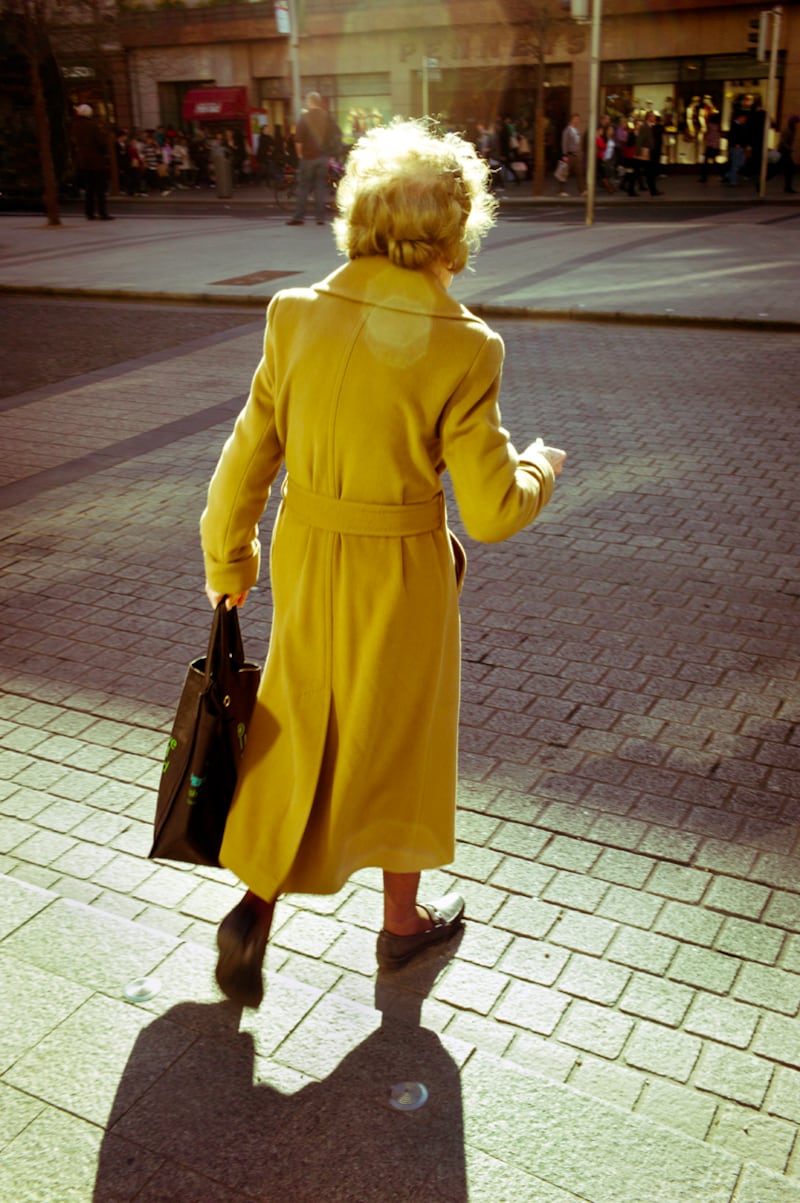
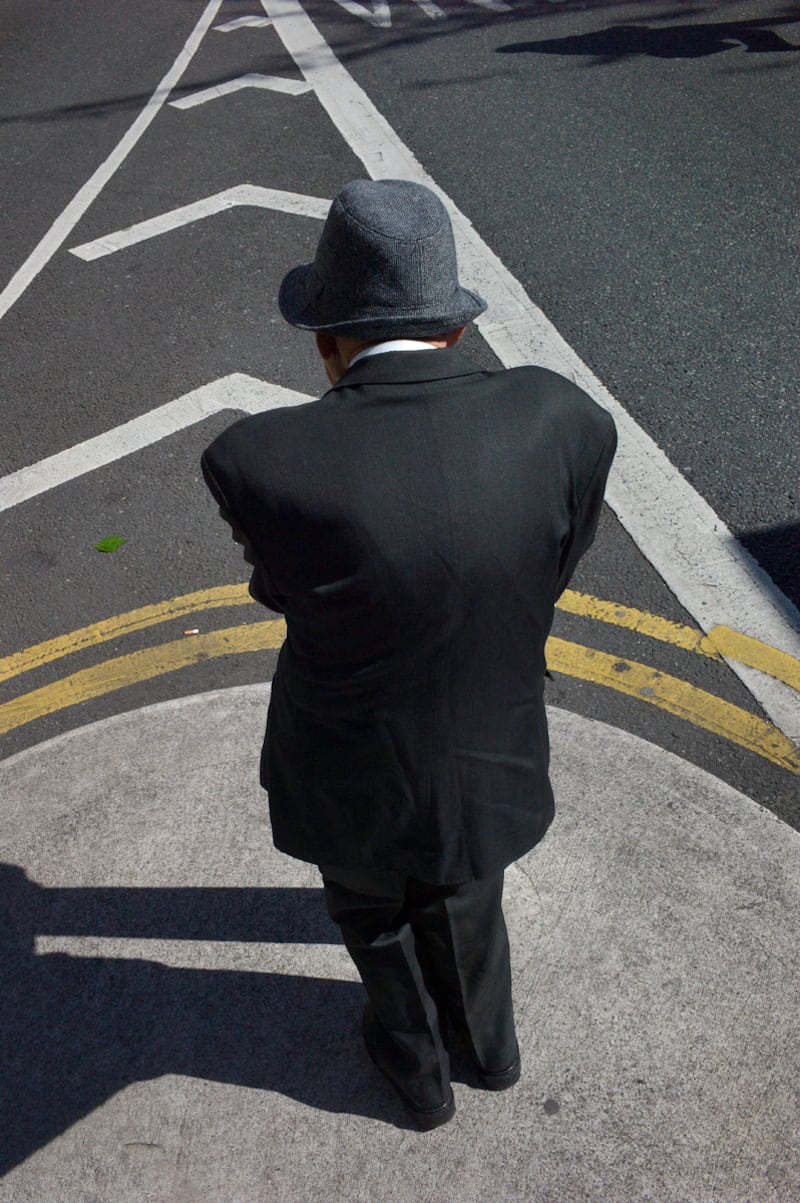
Doyle posted some of the photos he was taking on Facebook, and when Rory O’Neill (aka Panti, who was in college in Dún Laoghaire at the same time as Doyle) commented that he should do a book, Doyle started talking to his long-time collaborator Niall Sweeney, the celebrated designer.
Having saved the guts of €10,000, he was deciding whether to go back to college and do an MA in photography in Belfast, or put the money into a book. Around the same time, Karen Walshe, with whom Doyle worked with on Deaf , was working in a freelance capacity with the St Patrick’s Festival. She is now its artistic director.
With the financial crash then causing building projects to stall around the city, a sizeable stretch of O’Connell Street was fringed in hoarding. Walshe rang Nama who put her in touch with a company that had taken over the site. Doyle’s photos were printed up and mounted. Meant to stay for a couple of weeks, they lasted there a few years.
When Doyle printed the book, he sent a copy to the photographer Martin Parr, who became an early champion of his work, introducing him to the Michael Hoppen Gallery in London, which now represents him.
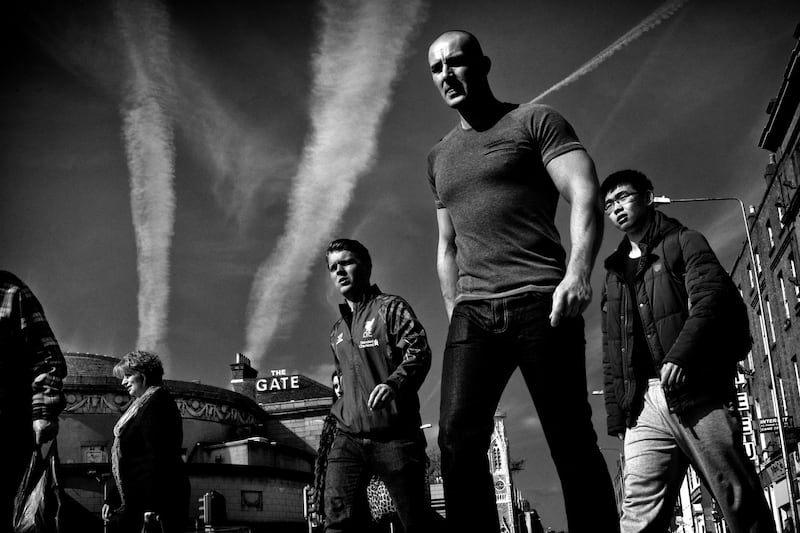
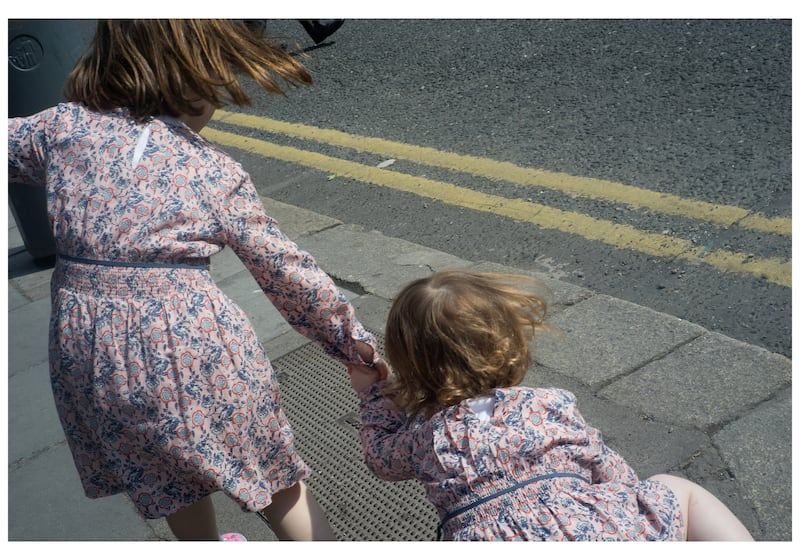
Doyle is almost achingly reticent about his work. His demeanour is at odds with an era of artists in thrall to self-promotion and constructing narratives about success and ladder-climbing. He deduces that his street photography aesthetic emerged from his “inherent shyness. I am extremely shy. I will never approach somebody on the street. I hate the idea of being the photographer on the street. I think some of it comes out of that, figuring out ways of how I can photograph… I think if I was a different type of person, I wouldn’t be coming from this perspective at all. I always thought I’d love to be able to walk into the situation and photograph the situation, but I can’t. I can never bring myself to do it.”
“People have a huge respect for him,” Walshe says. “People love to work with him. You do stuff for Eamonn. When we did the [K] book launch before Christmas, what I said to him afterwards is ‘people in the city love you, people come out and want to support you’. He is so modest about himself, he’s like ‘you know, just doing this book’. But people get it. It’s the quality. It’s the output. It’s absolutely stunning. But the person behind it doesn’t blow his own trumpet at all.”
Doyle flinches when I ask him how he feels about his success. “I don’t see it. I don’t know. It was funny because the Thames & Hudson book is one of the first times I’ve gone ‘hang on a minute. I’ve a book out on Thames & Hudson!’ I don’t support football teams but I guess it’s like getting signed to Liverpool. I would have been looking at their books in the 1980s when I was in college. Little things like that are kind of cool. I’m just going along for the ride. All I can think about is making new stuff. I really feel like I’m on catch up, so I’m not really thinking about it to be honest. It’s like, oh shit, I’ve wasted 20 years here. I could have been making work.”
“I was always struck by how reticent and shy he is,” David Donohoe says, “and that’s often mistaken for aloofness. He’s also someone who has always been doing something, culturally. Whether it was the D1 label or the club nights that went around it, the scene around that was really rich. You gravitated towards it. And magnifying that towards Deaf was a huge undertaking. It was a major cultural thing on the calendar every year. He’s probably finally maybe going into expressing himself, in a way, for himself rather than facilitating others.”
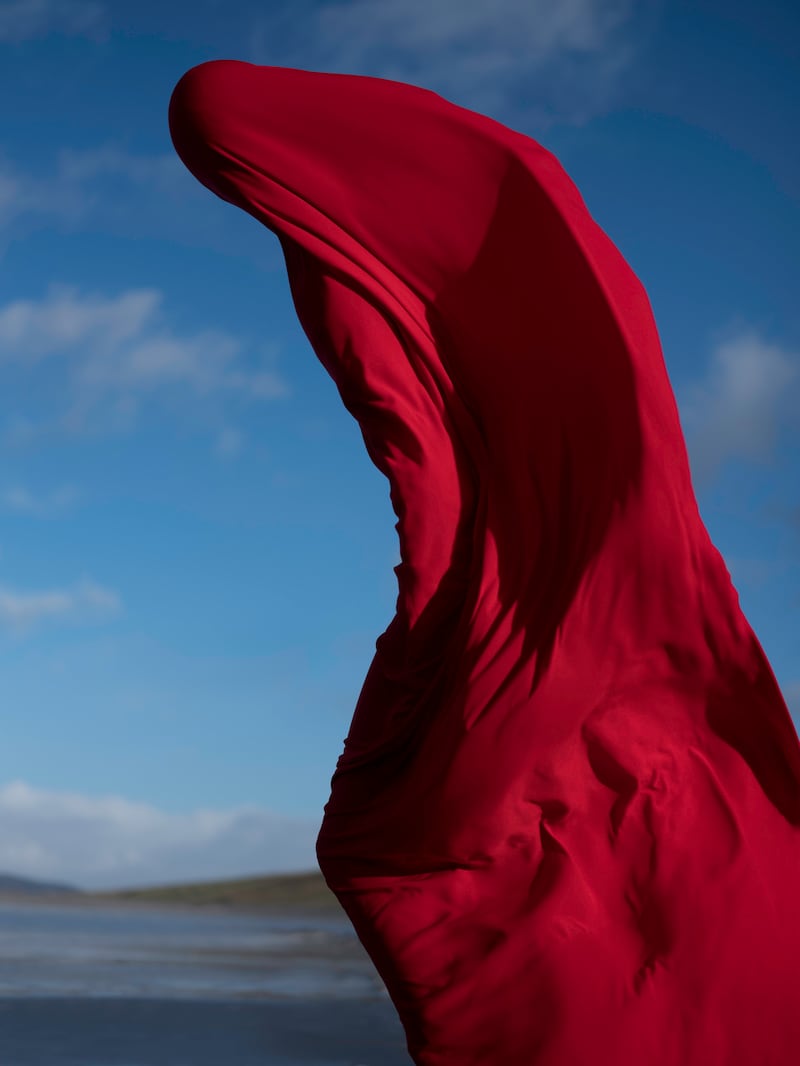
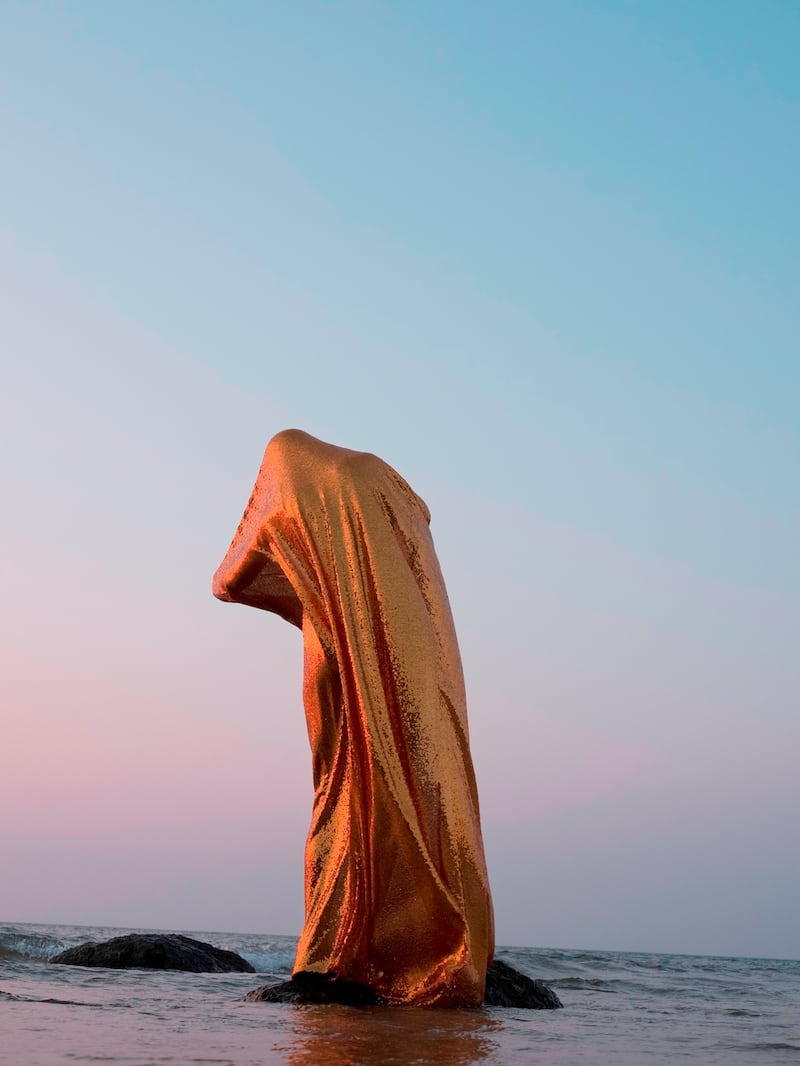
Donohoe has collaborated with Doyle for years, and also released music on the D1 Recordings label. For the book K, he contributed a music recording based on a 1951 recording by Kitty Gallagher, originally recorded by Alan Lomax. “I used that as my source material and composed various processes and manipulations, a two-piece work that appeared on the 10-inch vinyl,” Donohoe says. “It’s all about the layering of voice, and the layering of grief chimed with Eamonn’s layered prints of personal diary letters.”
The letters Donohoe refers to were found following the death of Doyle’s mother in 2017. Doyle’s brother, Ciarán, who was on the Irish Olympic swimming team, died suddenly in 1999, but it was only after his mother’s death that the family realised she had been writing to Ciarán almost every day until her own death. “I saw a direct correlation with the repeated, circling lopping laments from a mother to her son kept private. It’s obviously very poignant and devastating,” Donohoe says. The book is phenomenal, figures wrapped in fabric being moved by the wind surrounded by rock and water.
Time and time again, people seem to return to the movement in Doyle’s work. While the colours and compositions and empathy and sense of place are all integral, it’s the movement in the images that stirs something deep and resonating.
This sense of choreography, these awkward shapes and positions, and the stillness and motion involved in them, does come out of music: the beat, ideas of time
In Made in Dublin, the new book, the writer Kevin Barry provides vignettes that respond to the images. Speaking over Skype from Montevideo in Uruguay, Barry details his process of ruminating on Doyle’s photographs. For Barry, the photographs tell a story about Dublin that represents a tough town, a town where people are working all hours and not getting the most glorious rewards.
“There’s a real sense of striving that you get from them,” Barry says of the images, “I got this weird sense of timelessness about them. The photographs are obviously so fresh and contemporary, but they have this quality about them that gave a timeless sense to that street. It just seemed to capture moments where it could be past, present or future.”
Barry knew of Doyle for years, and had people in common though the 1990s club scene, but they only met a couple of years ago when Doyle took Barry’s photograph for Granta. Barry says Doyle’s photographs are “some of the most vivid and moving pieces of work that has come out of the city… It’s interesting that Eamonn’s background is so deeply rooted in music because there does seem to somehow be a musical quality to the work. There seems to be a sort of underlying rhythm to the photographs.”
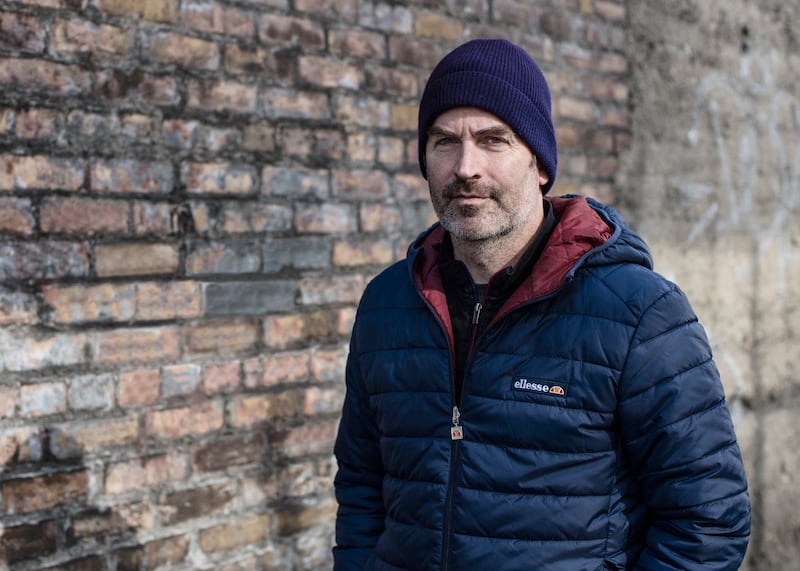
This sense of movement and rhythm within a city is intrinsic to Doyle’s work. While his photography stands out as a high peak of his creativity, there is a sense that it is also a culmination. “All the other things aren’t separate, they really aren’t,” Sweeney says of Doyle’s vast body of work. “His interest in music, music production, the festivals, the people he met, the relative DIY ethic of Detroit techno he translated into Dublin techno – it’s clear from his early work that the aesthetic eye was always there, it was just applied to sound…
“It was no surprise that he could take a photograph, and having lived on Parnell Street throughout the period of massive change, his eye was always on the street even if he was running across town with a bunch of cables or flyers. When he picked up the camera again, he was already ready. He had already set the stage. This sense of choreography, these awkward shapes and positions, and the stillness and motion involved in them, does come out of music: the beat, ideas of time, ideas of how people move and move together, literally physically, like contemporary dance, or also more metaphorical.”
You can see Beckett in Doyle’s work, and music, and the city, and wind, and the street. But these are external things. There is also a sort of circadian rhythm within the images. Perhaps that feeling of constant movement and of time stretching and contracting comes from Doyle himself. He is, after all, an artist who is always creating, always thinking, always pushing his own boundaries. The photographs might often show other people, but it is Doyle’s humble yet relentless force propelling it all forward.
Eamonn Doyle at the RHA begins on March 15th as part of the St Patrick's Festival. The D1 Recordings 25th-anniversary party is at Yamamori & Tengu, Dublin 1, on March 17th. Made in Dublin is published by Thames & Hudson on March 7th; eamonndoyle.com, stpatricksfestival.ie















